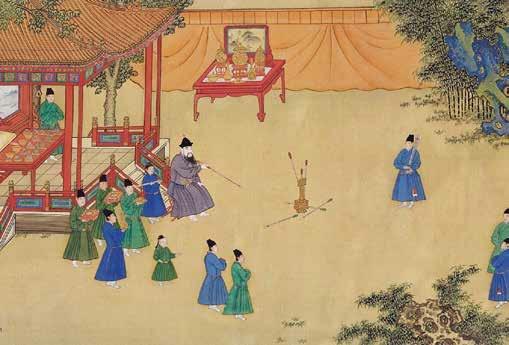Imperial Palace Across Dynasties
2020-02-04byGongHaiying
by Gong Haiying
Aworld-famous imperial palace, Beijings Forbidden City was the seat of supreme power in China for over five centuries. It witnessed the rise and fall of Chinas Ming(1368-1644) and Qing (1644-1911) dynasties and testified to the joys and sorrows of emperors residing there.
After Emperor Yongle (1360-1424) of the Ming Dynasty took the throne, he moved the regimes capital from Nanjing to Beijing and began constructing the Forbidden City. Qing Dynasty rulers continued to use the complex until its last emperor, Puyi, was expelled from the imperial palace in 1924. In a sense, these emperors represented the beginning, peak, and transformation of this magnificent architectural complex.
Beginning: Construction under Emperor Yongle
Emperor Yongle of the Ming Dynasty launched the massive project. Construction of the Forbidden City began in the fourth year (1406) of the Yongle reign (1403-1424) and completed in the 18th year (1420), commencing a history of imperial residence for several centuries across dynasties.
During the Ming Dynasty, the city of Beijing was renovated based on its layout in the Yuan Dynasty (1271-1368). The core of the city became the Forbidden City, surrounded by other complexes of fine buildings to support feudal rituals and ceremonies including the Temple of Heaven, the Temple of Earth, the Imperial Ancestral Temple, and the Altar of Land and Grain.
During the 22-year reign of Emperor Yongle, the third ruler of the Ming Dynasty, the national strength and world influence of the Ming Empire peaked. Just relocating the capital to Beijing was a big enough move to etch the emperors name into history forever.

Prosperity: Emperor Qianlong, Art Enthusiast
The successors of the Ming Dynasty, Qing rulers continued to enjoy and benefit from the city construction of the previous dynasty. Although some renovations were made to some structures of the Forbidden City, the overall layout remained unchanged throughout the Qing Dynasty.
The over 140,000 painting and calligraphic masterpieces housed in the Forbidden City showcase the profound development of Chinese calligraphy and painting history. During the reign of Emperor Qianlong (1711-1799), the longest reigning emperor of the Qing Dynasty, intense collection of calligraphy and painting laid the foundation for housing such works in todays Palace Museum.